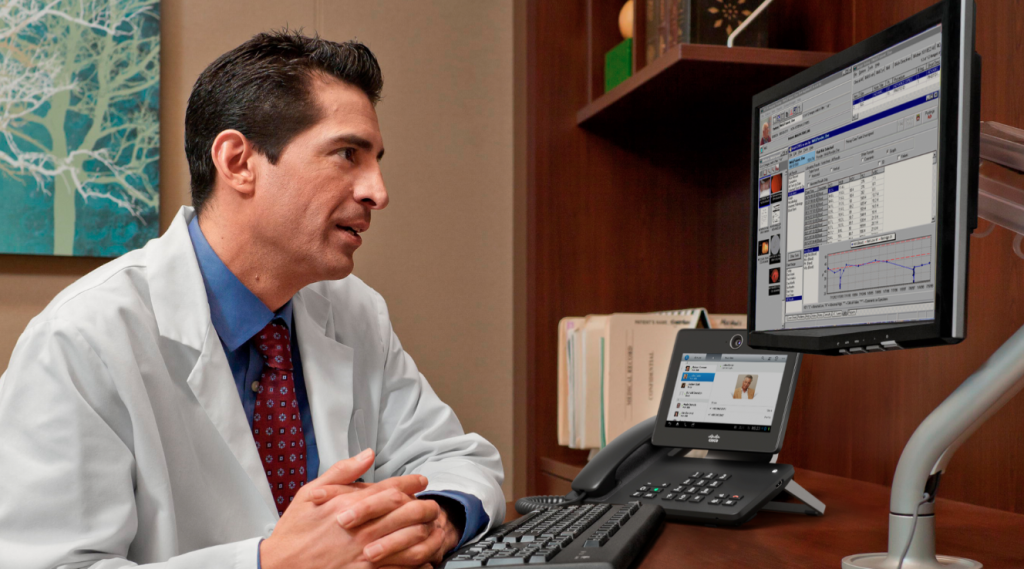
Healthcare Optimization: Effective Communication is the Key
Collaboration technologies are a sure way to reduce the delays that afflict the healthcare system.
The continuum of healthcare comprises a series of steps in which several players take turns to provide the patient’s care. Beyond purely medical issues, healthcare systems include a series of processes that require complex logistics.
A patient could, for example, call the Health Information line, where they may recommend that he go to the hospital. He may have to call an ambulance to take him to the emergency room. There, he goes though admissions, which could send him to another department to obtain his hospital card.
More administrative paperwork is required. Among other things, the hospital provides relevant information to his health insurance company and the patient contacts his insurance company to see if certain treatments or services (such as the room and television) are reimbursable. And when the patient leaves the hospital, his case is completed and closed, and then sent to the records department.
When it comes to treatments, the procedures are equally complex. In fact, a multitude of people – nurses, urgent care doctors, family physicians, radiologists, social workers, etc. – intervene, communicating with each other and with the patient and other resources such as homecare, specialists, administrative staff, etc.
It goes without saying that effective and fast transmission of relevant information among the different players is likely to reduce delays that impair the proper functioning of the healthcare system. Which means that reducing the delays leads to improved utilization of healthcare professionals and better quality services being offered to the population. The continuum of healthcare is a highly mobile environment, in which rapid access to information becomes increasingly critical.

Using state-of-the-art communication methods
Today we have user-friendly and affordable technologies (http://www.cisco.com/web/CA/solutions/strategy/healthcare/index.html) for transmission of images, voice and data that can easily be leveraged to improve the processes involved in healthcare. These technologies are already in use in the healthcare system; the supporting infrastructure and equipment are widely available. However, these technologies are deployed on an ad hoc and isolated basis, without having a comprehensive plan to reduce delays across the whole system, increasing efficiency.
In fact, the widespread use of concepts and techniques such as mobility (http://www.cisco.com/web/CA/solutions/trends/mobility/index.html), video, standardized communications and collaboration tools can render valuable services: fast access to information reduces the burden on caregivers, remote consultation avoids costly transportation of patients in large urban centers, better communication between patients and providers simplifies administrative tasks and reduces the duration of the process, the use of discussion forums increases the sources of information…
This avoids overburdening professionals with time-consuming processes, making them more available. It reduces the long waiting periods that patients must go through to access care, without increasing resources.
We all know that healthcare costs account for a growing portion of the budget of the Quebec government. Additionally, with the current state of government finances, healthcare seems to be an area specifically targeted for cost control. A more effective healthcare system, unhampered by long waiting periods, can not only provide better services to the population, but allow significant savings, helping to end Quebec’s budget impasse.
Author: Jerome Bourgoin, Regional Sales Manager
![jbourgoi[1]](https://alln-extcloud-storage.cisco.com/Cisco_Blogs:gblogs/sites/50/2014/08/jbourgoi1.jpg)
1 Comments




Cisco is big firm, it build a many more networking devices for sharing the data from one location to another.